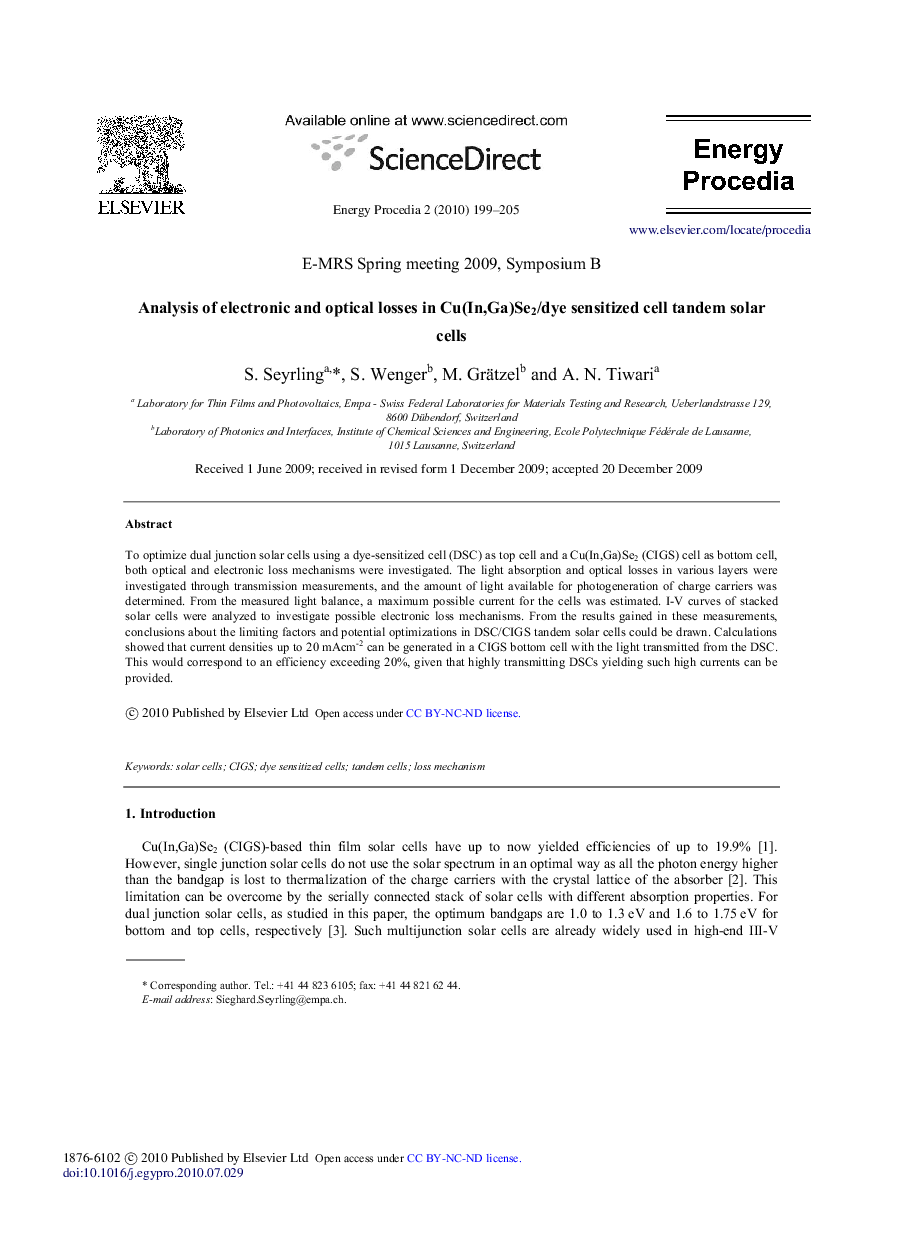| Article ID | Journal | Published Year | Pages | File Type |
|---|---|---|---|---|
| 1515092 | Energy Procedia | 2010 | 7 Pages |
To optimize dual junction solar cells using a dye-sensitized cell (DSC) as top cell and a Cu(In,Ga)Se2 (CIGS) cell as bottom cell, both optical and electronic loss mechanisms were investigated. The light absorption and optical losses in various layers were investigated through transmission measurements, and the amount of light available for photogeneration of charge carriers was determined. From the measured light balance, a maximum possible current for the cells was estimated. I-V curves of stacked solar cells were analyzed to investigate possible electronic loss mechanisms. From the results gained in these measurements, conclusions about the limiting factors and potential optimizations in DSC/CIGS tandem solar cells could be drawn. Calculations showed that current densities up to 20 mAcm−2 can be generated in a CIGS bottom cell with the light transmitted from the DSC. This would correspond to an efficiency exceeding 20%, given that highly transmitting DSCs yielding such high currents can be provided.
